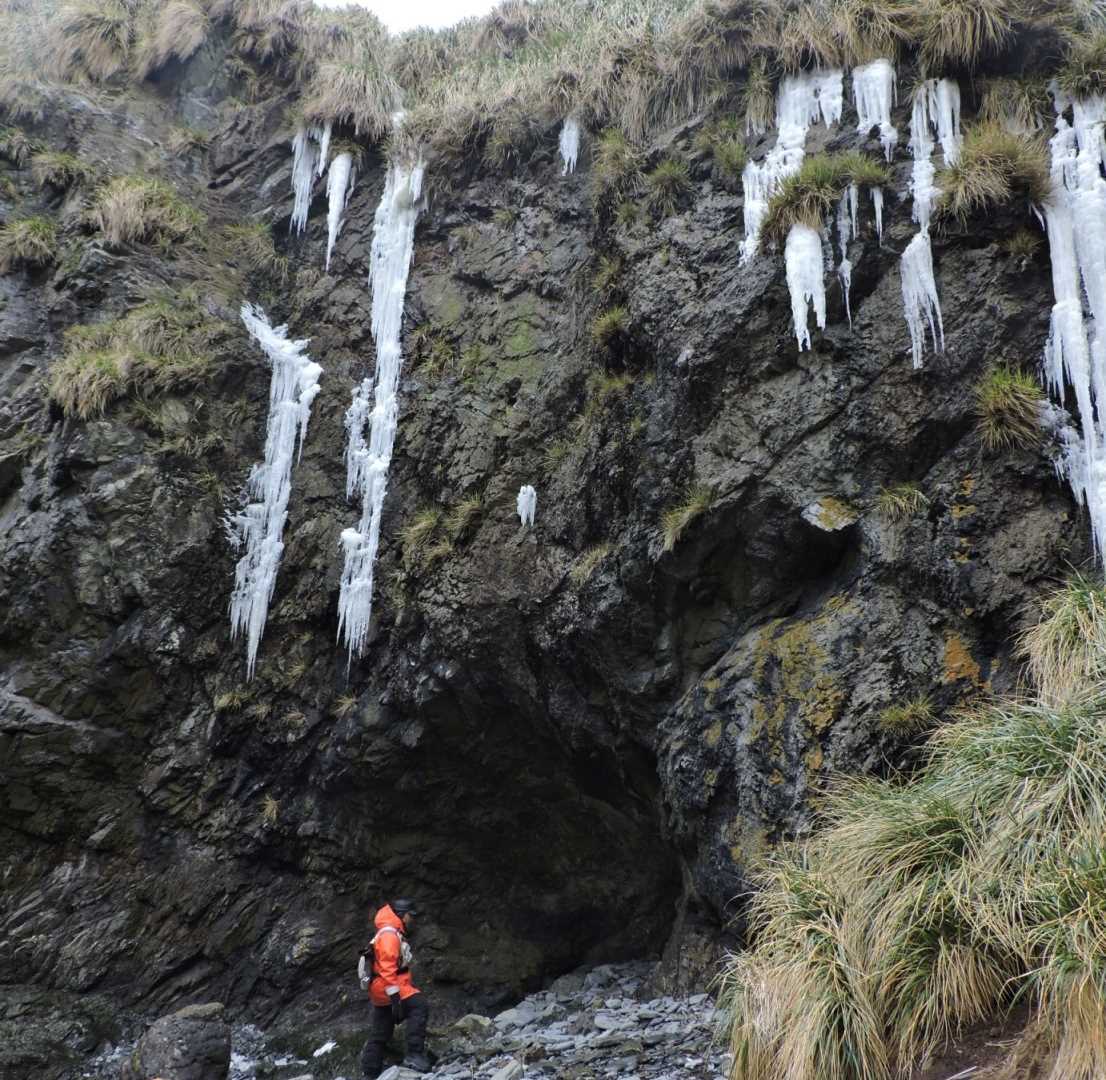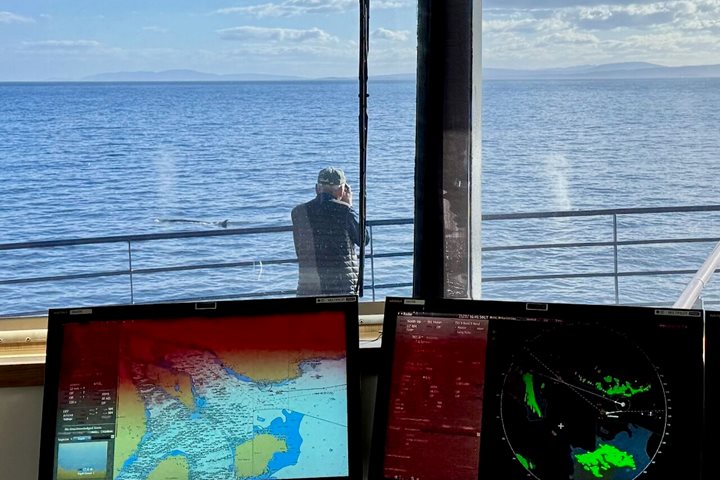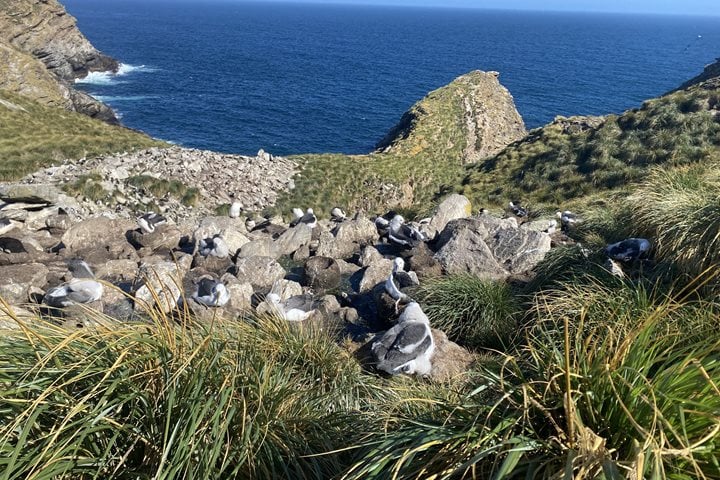Our easy and gentle westward passage continued throughout the morning as we made our approach to South Georgia. It was obvious that we had crossed the Polar Front, also known as the Antarctic Convergence, because it was now quite cold on the aft deck when we enjoyed a mid-morning traditional German “Frühschoppen”, complete with sausages, beer, Bloody Marys, and Bloody Caesars. The smell of sausages probably brought in more giant petrels following the ship than what we witnessed earlier in the morning. Yet another illustrated presentation was offered afterwards to help prepare everyone for the natural wonders ahead of us.
By midday, we had reached the mouth of King Haakon Bay in the southwestern region of South Georgia. This presented us with one of the few good landing regions on the southern coastline of the island. It is of great importance to us because it was here that Ernest Shackleton and five of his men arrived from Elephant Island in a small boat (the James Caird) after the destruction of his ship Endurance the previous year. Our first destination was
We returned to the ship and sailed farther into the bay and anchored off Peggotty Camp, Shackleton’s second camp in King Haakon Bay, named after a character in Charles Dickens’ book David Copperfield. From here, Shackleton and two companions hiked across the unknown mountain range of South Georgia to reach the whaling station of Stromness on the northern shore—an almost unbelievable feat. We made our second landing of the day here at Peggotty Camp. In addition to the historic significance, this was a good place to stretch our legs ashore and enjoy magnificent scenery and wildlife. We were greeted by endemic South Georgia pintails and South Georgia pipits, the two non-sea birds known to inhabit the island. The shoreline held numerous elephant seal rookeries that were distinctly separated from each other and stretched as far as the eye could see to the far end of the beach. This early time of the breeding season meant we were able to observe the goings on within these elephant seal breeding territories. All the females had given birth by this time, but some had newborns while most had babies that were two to three weeks old. We even saw a few weaners—young seals that had already been abandoned by their mothers and now had to fend for themselves after only three and a half weeks or so of being nursed by their mothers. This is shocking, but it is the way the system works with elephant seals. A few male fur seals were observed on the beaches, already setting up their own territories in anticipation of the females arriving next month.
As we walked around, it was obvious our dozen trekkers were excited about setting off on their own crossing of South Georgia (in Shackleton’s footsteps), because they could clearly see the Murray Snowfield and Shackleton’s Gap looming at the head of the bay, where they would be headed early the next morning. The remained at anchor overnight.
Live from South Georgia—watch on Facebook!
Right now our climbing team is transiting the sub-Antarctic island of South Georgia making their way across the island to the ruins of Stromness whaling station. They are following in the footsteps of Sir Ernest Shackleton who made the same trek 100 years ago in a successful bid to save his entire crew of Endurance. Our trekkers will walk into Stromness tomorrow, and we’ll interview them live on National Geographic’s Facebook page!







